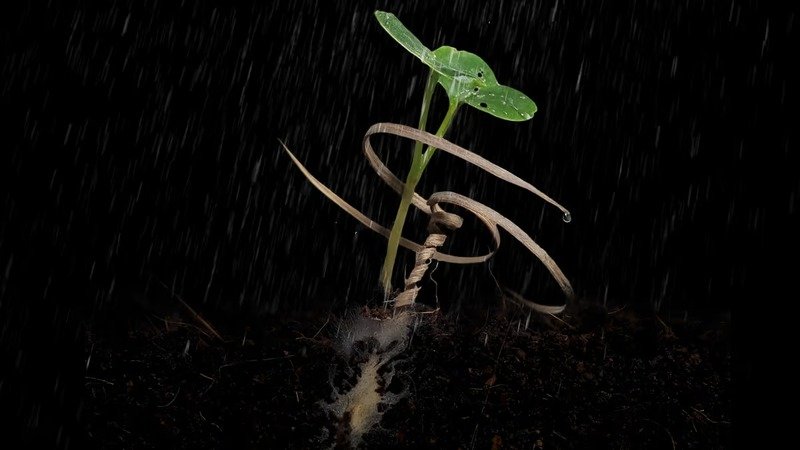In the face of escalating ecological challenges, a remarkable innovation known as the “Erodium Copy” robot has emerged as a beacon of hope for our planet’s beleaguered ecosystems. Developed by the ingenious minds at Morphing Matter Lab, this invention has the potential to reforest the Earth, safeguard endangered species, and replenish our vital natural resources. Drawing inspiration from nature’s own mechanisms, it operates with astonishing simplicity, providing a nature-inspired solution to one of humanity’s most pressing challenges.
🌿 Nature-Inspired Design: Mimicking the Erodium Seed
The Erodium Copy robot draws its design inspiration from the Erodium plant, which produces seeds with a hydromorphic tail-like structure that allows the seed to propel itself into the ground. This natural mechanism enables the seed to drill into the soil, ensuring successful germination.
Emulating this, the robot employs a coiled mechanism and three anchor points to ensure precision planting. By protecting seeds from environmental threats like drought and erosion, this technology enhances reforestation efforts while minimizing ecological impact through its biodegradable oakwood construction.
🌱 Sustainable Construction: Eco-Friendly Materials
One of the most remarkable aspects of this innovation is its commitment to sustainability. The primary material used in its construction is Oakwood, a wood renowned for its strength and eco-friendliness. By avoiding the use of additional synthetic materials, the Erodium Copy robot minimizes environmental harm, making it a truly eco-conscious solution for reforestation.
🚁 Deployment and Effectiveness: Drone-Aided Seed Dispersal
Extensive testing, including drone-assisted seed airdrops, has been conducted and achieved an impressive 90% success rate. This underscores the effectiveness of the Erodium Copy robot in its mission to restore our ecosystems. Furthermore, this robot is not limited to just planting seeds; it can also host symbiotic species like fungi and nematodes. This enhances plant survival rates in diverse environments, making it an invaluable tool for ecological restoration efforts worldwide.
🌍 Global Applications: Reforestation and Beyond
The Erodium Copy robot has a wide range of potential applications in the fields of reforestation, ecological restoration, conservation, and urban greening. For instance, it can be used to reforest large areas of land that have been deforested or degraded, such as the Amazon rainforest, boreal forests, and the savannas of Africa. Additionally, it can aid in restoring damaged ecosystems like wetlands, grasslands, and forests. In urban settings, the robot can help plant trees and other vegetation to create green spaces, improve air quality, and reduce the urban heat island effect.
🔬 Future Prospects: A Step Towards Global Reforestation
As forests regrow, they can gradually restore degraded landscapes, stabilize soils, and improve water quality in surrounding regions. The potential for widespread deployment of this technology could contribute to forest ecosystems’ resilience, allowing them to better withstand and recover from future environmental pressures such as drought and extreme weather events.
In a world grappling with the consequences of environmental degradation and climate change, the Erodium Copy robot stands as a symbol of human ingenuity and our capacity to work in harmony with nature. It offers not only a practical solution to pressing ecological challenges but also rekindles hope for a greener, more sustainable future. As we witness the ongoing impact of this remarkable invention, it reminds us that nature-inspired innovation can drive meaningful, positive change.
🌟 Conclusion: A Beacon of Hope for Our Planet
The Erodium Copy robot exemplifies how biomimicry and sustainable engineering can converge to address pressing environmental issues. By emulating natural seed dispersal mechanisms and utilizing eco-friendly materials, this innovation offers a promising solution for global reforestation efforts. Its successful deployment could play a pivotal role in restoring ecosystems, combating climate change, and ensuring a healthier planet for future generations.


